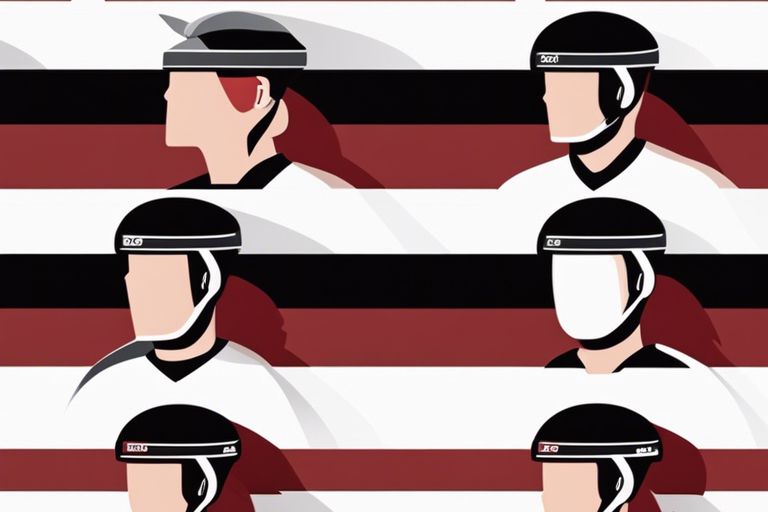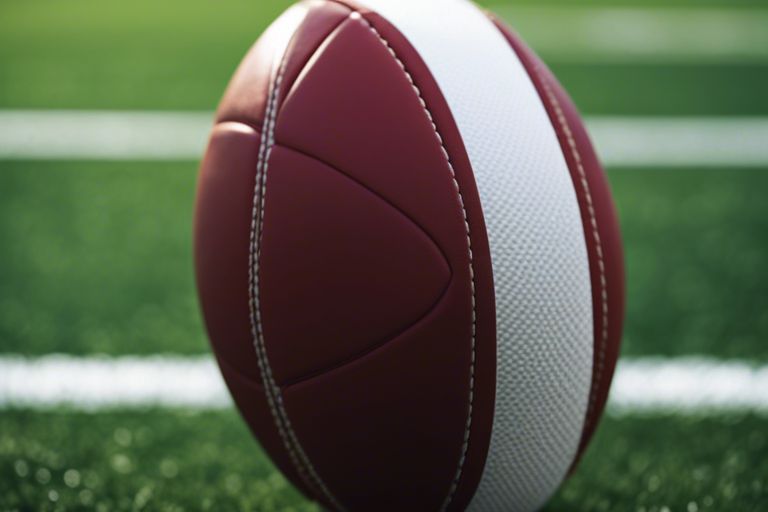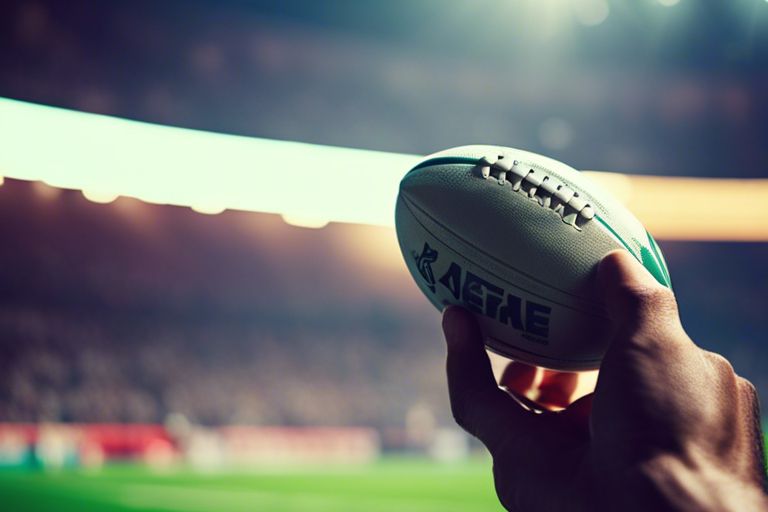There’s a strategic reason behind the specific designations of rugby headgear based on the position played by athletes on the field. In the high-impact sport of rugby, players are exposed to different levels and types of physical contact depending on their role in the game. As a result, headgear is tailored to offer varying degrees of protection and support according to the unique demands of each position. Understanding why rugby headgear is designated based on position played can provide valuable insights into the equipment choices made by players and teams, ultimately enhancing safety and performance on the field.
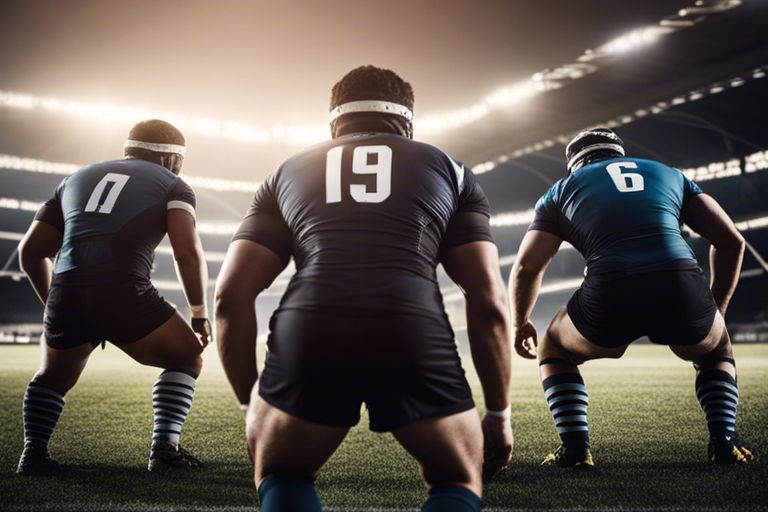
Key Takeaways:
- Rugby head gear is designated based on position played to provide specialized protection for the unique demands and risks associated with each position on the field.
- Forwards typically wear head gear with additional padding around the ears and temples to protect against scrums, rucks, and mauls where they are most at risk for head injuries.
- Backs may opt for lighter head gear that focuses more on impact resistance for high-speed collisions and tackles commonly encountered during running plays.
- Scrum caps are popular head gear choices as they provide a balance of protection and comfort suitable for players in various positions, offering some level of customization based on player preference and needs.
- Ultimately, the choice of head gear is a personal decision based on the playing style and position of the rugby player, with safety being the primary concern to prevent head injuries on the field.
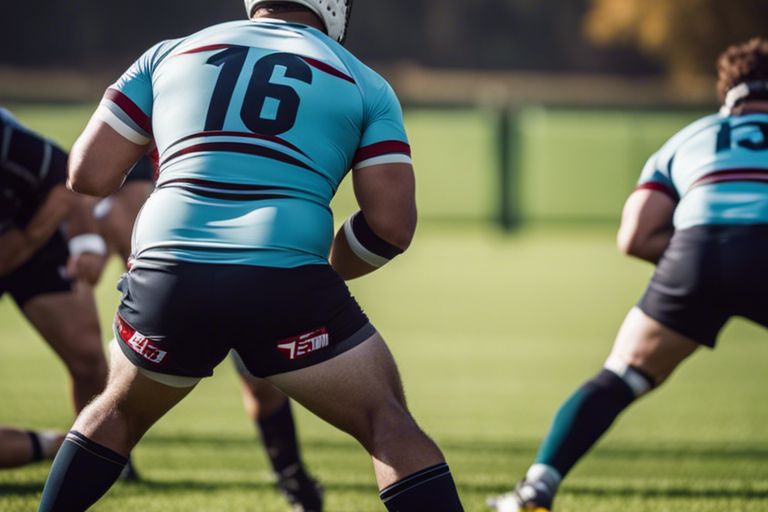
Understanding the Different Positions in Rugby
There’s a growing concern around the world regarding the safety of rugby players, particularly in relation to head injuries. A study conducted on Attitudes towards protective headgear in UK rugby union sheds light on the importance of protective headgear in the sport.
Characteristics of Forward Positions
Positions in the forward pack of a rugby team are typically occupied by larger, more powerful players. These players are responsible for tasks such as scrummaging, lineouts, and rough play in mauls and rucks. Forwards need to possess strength, physicality, and endurance to excel in their roles on the field.
Characteristics of Backline Positions
Different from forwards, backline players in rugby are usually faster and more agile. They occupy positions such as the fly-half, centers, wingers, and fullback. These players are skilled in evading tackles, passing the ball accurately, and scoring tries. Backline players rely on speed, agility, and decision-making skills to outwit their opponents.
Positions in the backline require a high level of skill, coordination, and strategic thinking. They often act as playmakers, creating opportunities for the team to score points and dictating the flow of the game with their tactical decisions.
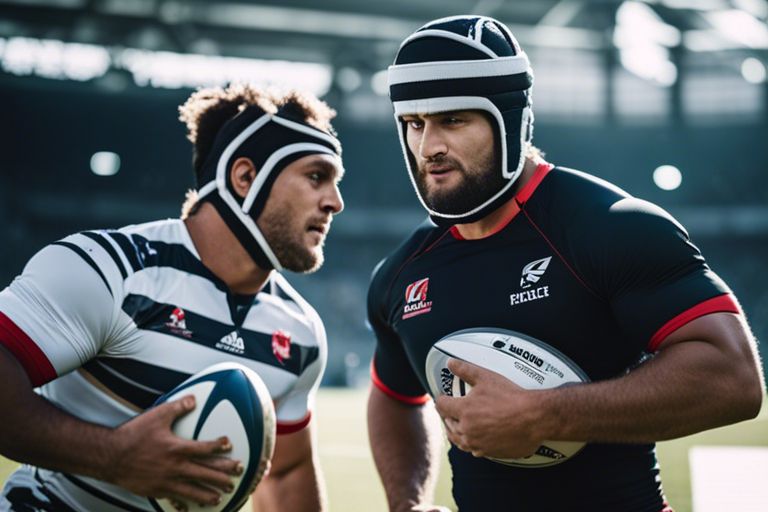
Design Features of Rugby Head Gear
Protection Requirements for Different Positions
It is imperative in rugby that head gear provides adequate protection based on the position played. Forwards, who are often involved in scrums and mauls, require head gear with more padding and reinforcement to protect against impact and potential head injuries. Backs, on the other hand, need head gear that is lighter and more streamlined to allow for greater speed and agility while still offering protection against collisions.
Material and Construction Variables
Rugby head gear is constructed using a combination of materials such as foam padding, impact-resistant plastics, and breathable fabrics. The design and construction of the head gear vary based on the specific needs of the player’s position. For example, forwards may require head gear with thicker padding on the sides and top of the head, while backs may prioritize lightweight materials and improved visibility.
Plus, the stitching and strapping systems used in the head gear also play a crucial role in ensuring a secure and comfortable fit for the player. Adjustable straps and reinforced stitching are imperative to maintain the position of the head gear during intense physical contact on the field.
The Impact of Position-Specific Head Gear on Safety and Performance
Injury Prevention and Head Gear
An necessary aspect of rugby head gear is its role in injury prevention. Sam Underhill, a prominent rugby player, has raised concerns regarding the effectiveness of scrum caps in preventing concussions. While head gear can provide some protection against cuts and abrasions, it is crucial to note that no head gear can completely eliminate the risk of concussions. It is necessary for players to use proper tackling techniques and adhere to safety protocols to reduce the likelihood of head injuries. For more information on this topic, you can refer to Sam Underhill, Concussion & Scrum Caps here.
Enhancing Performance with Position-Specific Features
On the field, different rugby positions require distinct skills and physical attributes. Position-specific head gear can play a crucial role in enhancing a player’s performance by providing targeted support and protection. For example, props and forwards may benefit from head gear designed to offer additional cushioning and impact resistance during scrums and mauls. Conversely, backs may prioritize lightweight and streamlined head gear to maintain agility and speed. By customizing head gear based on position requirements, players can optimize their performance while staying protected on the pitch.
The design of position-specific head gear is tailored to address the unique demands of each rugby position, contributing to both safety and performance on the field. Props and forwards, who are frequently involved in physical contact situations such as scrums and rucks, may require head gear with reinforced padding to reduce the risk of head injuries. In contrast, backs, known for their speed and agility, may prefer lighter head gear that offers mobility without compromising protection. By considering the specific needs of each position, players can maximize their performance potential while minimizing injury risks during intense rugby contests.
The Evolution of Rugby Head Gear
Keep Why does one rugby player wear a helmet? in mind as we explore the historical evolution of rugby headgear. From basic leather skull caps to the advanced position-specific helmets seen in modern rugby, the design and purpose of headgear in rugby have undergone significant changes over time.
Historical Developments in Safety Equipment
Any discussion of rugby headgear evolution must include historical developments in safety equipment. Initially, players relied on simple leather caps to protect their heads during gameplay. As the sport evolved and safety concerns became more prominent, advancements in materials and technology led to the development of more protective headgear, particularly for players in positions where head injuries were more common. These developments paved the way for the position-specific headgear we see today.
The Future of Position-Specific Rugby Gear
With the increasing focus on player safety in sports, including rugby, the future of position-specific rugby gear is likely to see continued advancements in design and functionality. Manufacturers are constantly researching and innovating to create gear that offers the best possible protection for players based on their position on the field. This tailored approach to headgear design not only enhances player safety but also optimizes performance by considering the specific needs of each position.
Historical trends suggest that position-specific rugby gear will become even more specialized in the future, utilizing advanced materials and technologies to provide players with the highest level of protection and performance on the field.
Conclusion
With these considerations in mind, it is evident that rugby head gear designated based on the position played serves a crucial purpose in ensuring player safety and performance on the field. By tailoring head gear to the specific risks and demands of each position, players are better equipped to prevent injury and maximize their effectiveness during play. Understanding the unique requirements of each position allows for the development of head gear that provides adequate protection without compromising mobility or comfort. Ultimately, the designation of rugby head gear based on position played is a practical and necessary measure to enhance player welfare and support optimal performance in the sport.
FAQ
Q: Why are rugby head gear designated based on position played?
A: In rugby, different positions on the field face varying levels of physical contact and potential for head injuries. As a result, specialized head gear is designed to provide position-specific protection and support based on the unique demands of each role.
Q: What are some key features of head gear for different rugby positions?
A: Head gear for forwards, such as props and locks, often feature added padding around the ears and jaw to protect against scrum engagement and collisions in rucks and mauls. Backs, on the other hand, may opt for lighter head gear with better ventilation and visibility to support their agility and speed on the field.
Q: How does position-specific head gear contribute to player safety in rugby?
A: By tailoring head gear to the requirements of each position, players can enjoy enhanced protection in areas most vulnerable to impact while maintaining comfort and performance. This specialized approach helps reduce the risk of head injuries and ensures that players can focus on their game with confidence.

